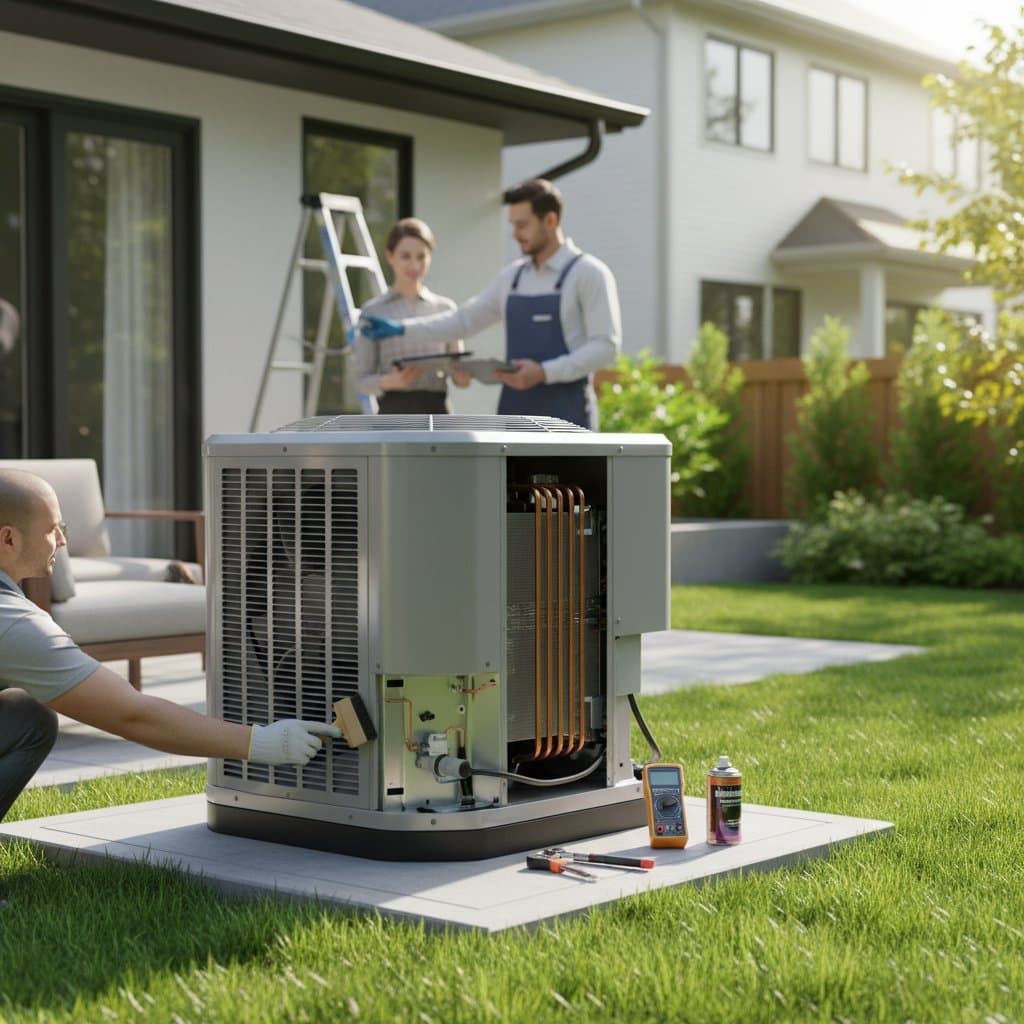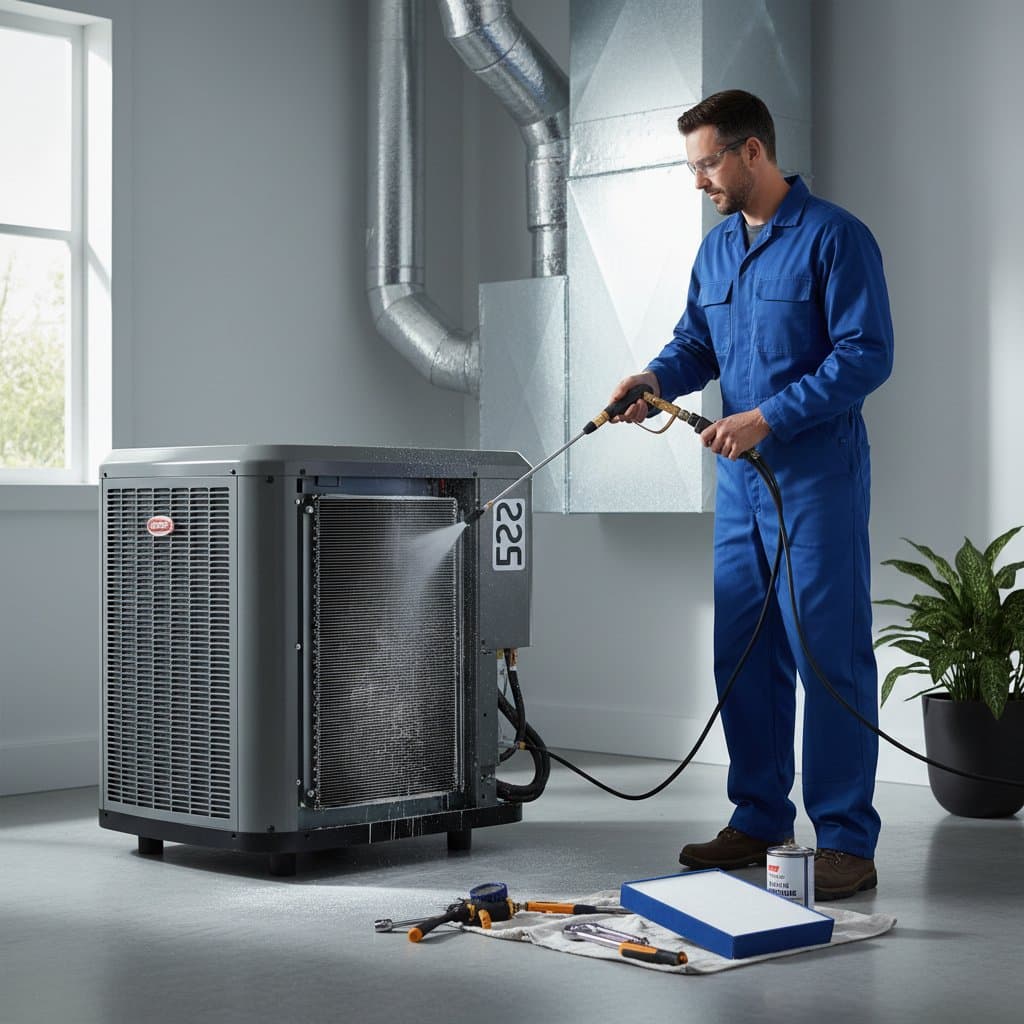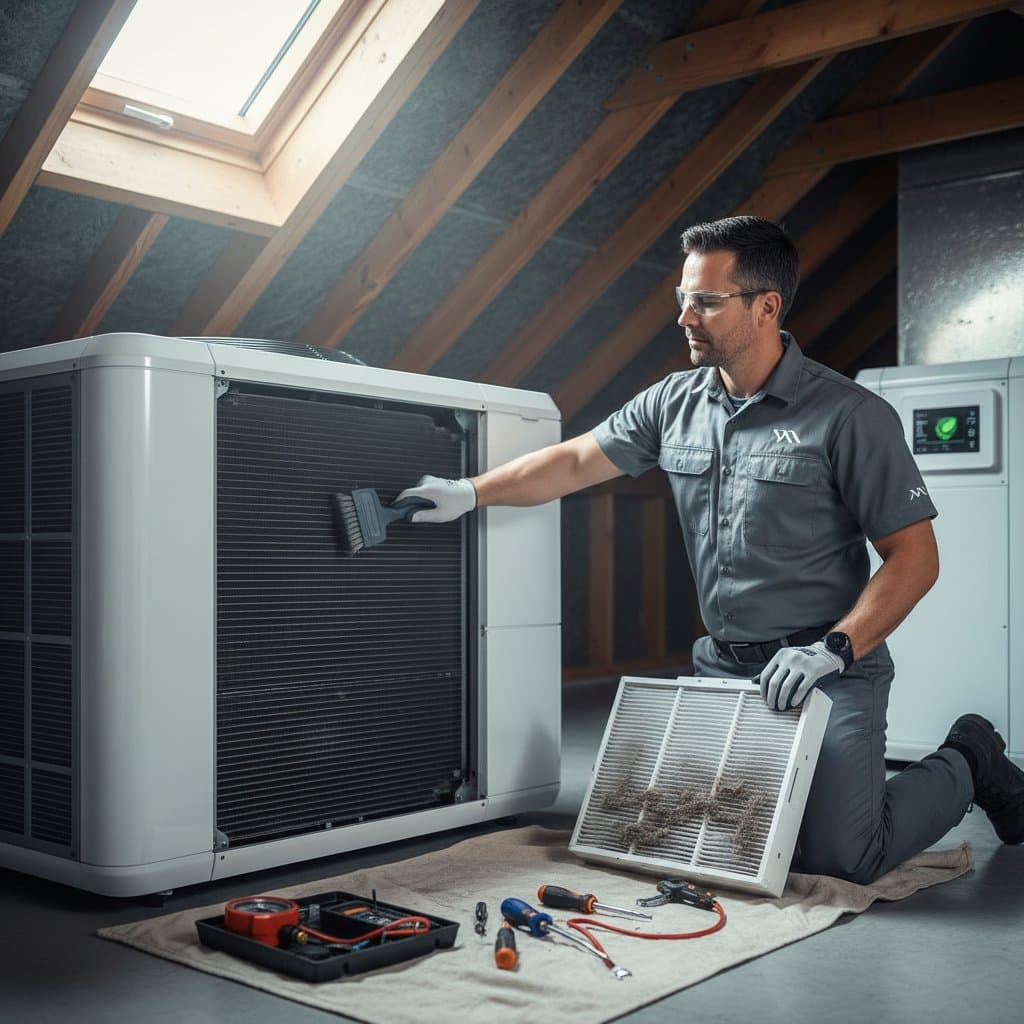Prepare Your AC for Summer: Essential Pre-Season Checks
Summer heat demands a reliable air conditioning system, yet many homeowners face unexpected breakdowns when temperatures rise. Proactive maintenance addresses common issues before they escalate, saving time, money, and discomfort. This guide outlines key steps to inspect and optimize your AC unit, drawing on proven techniques for peak performance.
Begin with basic visual and auditory assessments, then progress to detailed checks. These actions not only extend equipment life but also improve indoor air quality and energy efficiency. Follow these recommendations to enjoy a seamless cooling season.
Inspect Air Ducts for Leaks and Efficiency
Air ducts form the backbone of your cooling system, distributing conditioned air throughout your home. Leaks in these ducts can lead to significant energy loss, with studies indicating that up to 30 percent of cooled air escapes through unsealed gaps or damaged sections. Addressing duct issues early prevents inefficiency and maintains consistent temperatures.
To identify potential leaks, run your AC at a moderate setting and examine accessible ductwork, particularly in attics, basements, or crawl spaces. Feel for drafts along joints and seams using your hand. Listen closely for hissing or whistling noises that signal escaping air. For hidden areas, consider using a smoke pencil to visualize airflow disruptions or a thermal imaging tool if available, though professional assistance ensures thorough detection.
Once leaks appear, seal them promptly with high-quality materials. Apply mastic sealant or aluminum foil tape to joints, avoiding cloth-backed duct tape which deteriorates over time. Insulate unexposed ducts with fiberglass wraps or foam sleeves to minimize condensation and heat gain. After repairs, test the system again to confirm improved airflow and reduced operational noise.
Suggested image: Diagram illustrating common duct leak locations and sealing methods, with alt text "Air duct inspection and sealing guide for homeowners."
Verify Refrigerant Levels and System Pressures
Refrigerant serves as the lifeblood of your AC, absorbing and releasing heat to cool your home. Low levels compromise this process, resulting in reduced cooling capacity and potential damage to the compressor, which operates under excessive strain. Homeowners often overlook subtle indicators until performance declines sharply.
Monitor for warning signs such as ice formation on the evaporator coils or refrigerant lines, diminished airflow from vents, or air that feels insufficiently cool. Other clues include the unit running longer than usual or unexplained spikes in energy consumption. Hissing sounds near the outdoor unit may indicate a leak, requiring immediate attention to avoid further refrigerant loss.
Homeowners cannot legally or safely handle refrigerant replenishment, as it involves specialized equipment and environmental regulations. Instead, document these symptoms and contact a certified technician for a pressure test and recharge. Schedule this check annually, ideally in spring, and retain service records to monitor trends like gradual level drops that might signal broader system wear.
Regular verification keeps the compressor protected and ensures even cooling distribution. Technicians also inspect for corrosion or loose connections during these visits, enhancing overall system reliability.
Develop and Follow a Comprehensive Maintenance Checklist
A structured checklist transforms sporadic upkeep into a systematic routine, ensuring no critical task slips through. This approach provides a clear record for personal reference or sharing with service professionals, facilitating targeted repairs when necessary. Implement it before peak summer demand to sidestep disruptions.
Customize your list based on your system's age and usage, but include these foundational items:
- Replace or clean air filters to promote unrestricted airflow and indoor air purity.
- Clear debris from the outdoor condenser unit, maintaining at least two feet of clearance around it.
- Examine electrical wiring and insulation for fraying or exposure to prevent short circuits.
- Flush the condensate drain line to avoid water backups that lead to mold growth or unit shutdowns.
- Test thermostat accuracy by comparing its reading to a separate thermometer and calibrating if needed.
- Assess airflow from every vent, adjusting dampers to balance distribution across rooms.
- Listen for irregular noises like grinding or rattling, which may indicate loose components.
- Arrange a professional inspection if the system shows signs of age or prior neglect.
Store this checklist in a accessible format, such as a printed sheet or digital app, and review it monthly during warmer months. Consistency in these steps yields measurable benefits, from quieter operation to extended equipment lifespan.
Suggested image: Printable checklist graphic with checkboxes, alt text "Summer AC maintenance checklist for efficient home cooling."
Clean Filters, Coils, and Surrounding Areas
Filters and coils accumulate dust and debris over time, restricting airflow and forcing the system to work harder. A clogged filter alone can increase energy use by up to 15 percent, while dirty coils hinder heat exchange, leading to overheating and inefficiency. Routine cleaning restores optimal function and safeguards against premature failures.
Start by locating and removing the air filter, typically found behind the return vent or furnace. Vacuum loose particles, then wash reusable filters with mild soap and water, or install a new disposable one rated for your unit's specifications. For evaporator and condenser coils, gently brush away surface dirt using a soft tool, avoiding bending the fins.
Clear the outdoor unit of leaves, grass, or pollen buildup, which can block vital airflow. Power off the system before any cleaning to ensure safety. If coils show heavy soiling, a professional coil cleaning service uses approved chemicals to remove stubborn residue without damage.
These maintenance practices not only boost efficiency but also enhance air quality by reducing allergens circulated through your home. Perform filter changes every one to three months, depending on household occupancy and pet presence.
Test Thermostat and Electrical Components
The thermostat regulates your AC's operation, and inaccuracies can cause overcooling or insufficient runtime. Faulty wiring or capacitors may trigger intermittent failures, especially under summer loads. Early testing identifies these vulnerabilities before they cause total outages.
Verify thermostat functionality by setting it to cool mode and observing the system's response time. Check batteries in digital models and replace them annually. For older mercury thermostats, consider upgrading to programmable versions that optimize energy use through automated schedules.
Inspect visible electrical connections for tightness and corrosion, but leave internal diagnostics to experts. Listen for humming from the contactor upon startup; persistent clicking suggests a failing component. Document any irregularities to guide professional troubleshooting.
Proper electrical health prevents fire hazards and ensures stable performance. Annual professional tune-ups include comprehensive electrical checks, aligning with manufacturer recommendations for warranty compliance.
Invest in Long-Term System Reliability
Consistent maintenance represents a strategic investment in your home's comfort and financial well-being. By addressing issues proactively, homeowners avoid the average $300 to $1,000 cost of emergency repairs, not to mention the inconvenience of sweltering days without cooling. Over time, these efforts can extend AC lifespan by several years, deferring the need for costly replacements.
Track your maintenance history to anticipate needs, such as coil deep cleans every few years or duct reinspections in older homes. Engage certified technicians for complex tasks, ensuring compliance with safety standards. The result is a resilient system that delivers quiet, efficient cooling season after season.
Embrace this routine to transform potential headaches into peace of mind. Your diligence today secures comfortable tomorrows, even as temperatures climb.





